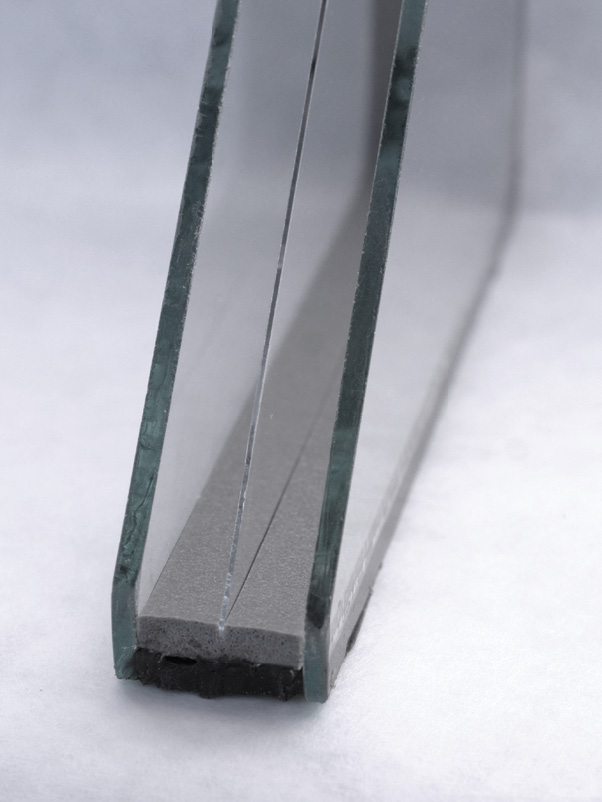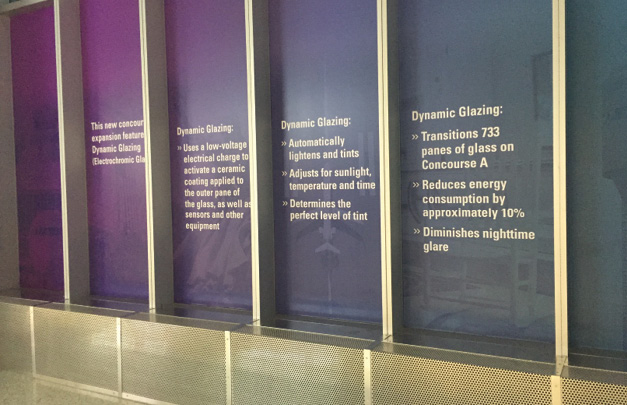
A skinny triple insulating glass unit, from Quanex Building Products.
In today’s industry, sustainability isn’t just about energy efficiency and performance. It’s about delivering solutions that meet those needs, but also stand the test of time.
Any commercial construction project is a major investment of resources. And as codes, thermal efficiency demands, and more holistic sustainability imperatives gain traction throughout much of the commercial construction space, those investments must be made more deliberately than ever before.
Think about some of the developments we’ve seen this year. New York City Mayor Bill de Blasio stirred the pot by stating his intent to introduce legislation to ban new “glass and steel” skyscrapers from the city skyline (importantly to note, there’s no actual ban happening here—but energy code requirements will tighten significantly). Meanwhile, the California Energy Efficiency Strategic Plan has set its goal of all new residential construction meeting net zero energy by 2020, with commercial construction to follow in 2030.
The glass industry is a major part of this conversation, and thermal performance has been an important demand for a while now. But new building codes and standards will only grow stricter, and it’s important that we’re fulfilling our end of the bargain with products and solutions that do more than contribute to thermal performance in the short term. True, long-term sustainability depends on products, components and construction strategies that contribute to longevity and performance for years and decades to come.
So, how can commercial glass professionals marry performance and resiliency, along with economic affordability, aesthetics and more?

Quanex commercial systems with electrochromic glass, featured at the Charlotte Douglas International Airport.
Find the right product combinations
Depending on the specific application, there are a lot of different product combinations that glass and glazing professionals can deploy to hit needed thermal targets and contribute to more sustainable structures.
Insulating glass is obviously key here, but it can’t do the job on its own. Framing is becoming an important part of the conversation. Metallic options are the traditional choice for commercial applications, chosen for their strength and, indeed, their resiliency. But metal framing is inherently thermally conductive and requires some sort of thermal break to meet today’s standards. New framing technologies like vinyl, fiberglass and composites could be increasingly utilized to hit new thermal performance targets, especially for punched-opening applications in a variety of new commercial construction.
Choice in spacer system is another important consideration—not just in terms of performance in the final application, but how well it can be integrated into operations for efficient production. Then there are low-emissivity coatings and other technologies that can be applied to further enhance overall performance.
Finding the right economic balance among these options is critical, for both the fabricator who needs to put it all together, and for the developer weighing options in the final application. Sustainable solutions must be economically attainable, after all. Introducing required thermal breaks in metallic materials can become complex and sometimes costlier in an application where an alternative vinyl or composite material could deliver the performance more elegantly.
As the industry seeks solutions for a more sustainable future, performance must be weighed with longevity, reliability and proven field performance. A unit failure in the field means more resources devoted to replacement and, of course, damage to a company’s reputation. As new solutions continue to present themselves, it’s important to choose suppliers and products with a track record of proven success, along with the proper balance of performance and economic characteristics that make sense for the project at hand.
Enable new technologies
In the U.S. fenestration market, triple-paned insulating glass units are slowly but surely becoming part of the conversation. In some ways, this has always been inevitable. Certain codes and standards have begun to demand performance that only triples are thought to be able to provide, the net zero energy considerations slowly going into effect in California being one of the most prominent examples.
Triples are common in Europe and Canada, but in the United States, we’ve been able to deliver performance that the market demands through a combination of double-paned IGUs, low-E coatings and framing solutions. Triples, after all, are more complex to manufacture and require different architectural considerations to handle their weight. One emerging technology to consider is “skinny” or “thin” triples—triple-paned insulating glass units containing a thin, nonstructural center lite that are essentially the same thickness and weight as a traditional double-paned unit.
There are other emerging technologies out there as well. Dynamic glass continues to grow and dynamic windows featuring automatic shading are another technology being researched by Berkeley Lab in pursuit of net zero energy goals, with their ability to optimize solar heat gain.
Deploying these kinds of emerging technologies requires thoughtful consideration about the entirety of the glass system, including high-performance componentry like spacers and framing that can help push those performance figures even further, as well as ensure reliable, long-term performance in the field.
As an industry, it’s important that we think holistically about how we can contribute to higher performance and greater sustainability goals with high-performance glass and glazing. Because it’s not just about performance. It’s about value, feasibility and longevity. True sustainable structures for our future must be designed and built purposefully to last a lifetime.


